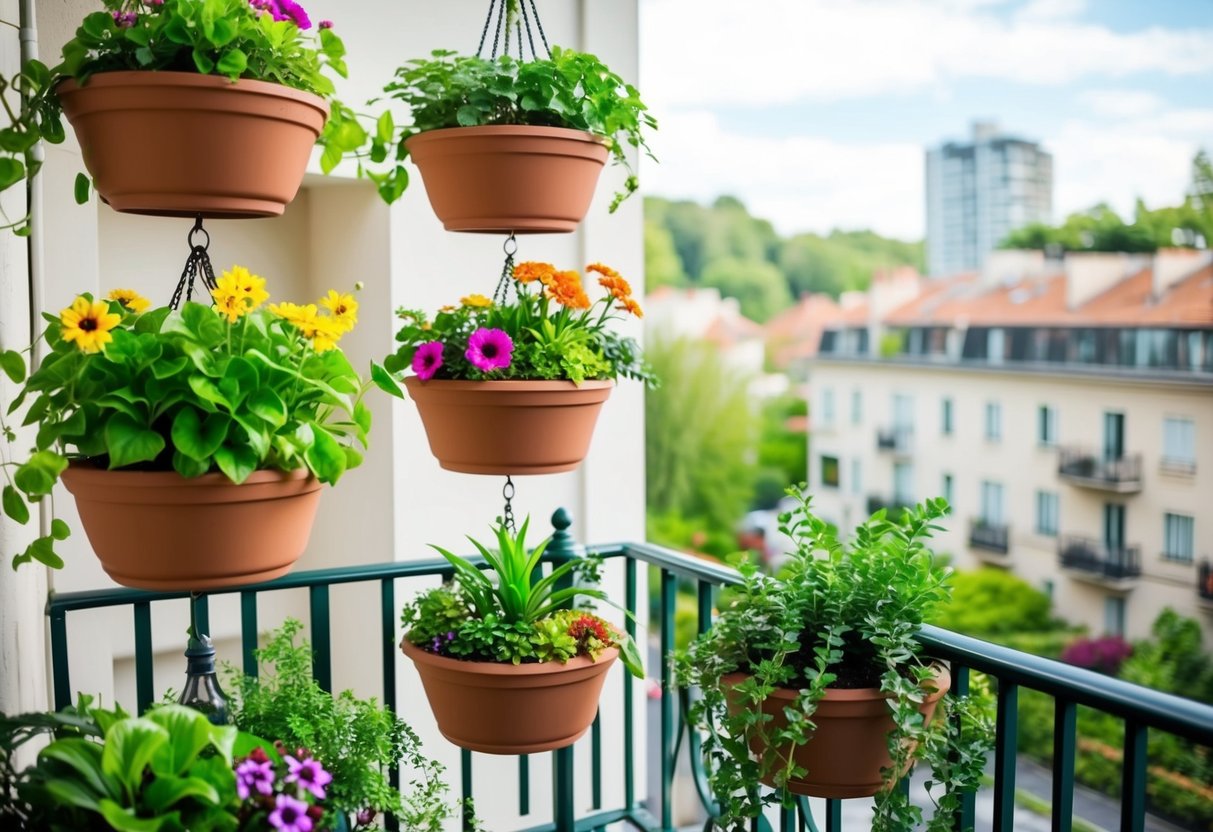
Indoor Air Plant Displays
Air plants, or Tillandsias, offer a versatile and elegant option for indoor vertical gardens. They don’t require soil, relying instead on air, light, and occasional misting for sustenance. This makes them ideal for modern and minimalist decor. Arranging them in vertical terrariums or on wooden frames can create captivating displays.
They can be attached to cork bark or driftwood, providing an organic look that complements various interior styles. Using fishing line or wire, the plants can be suspended mid-air, creating a floating effect. When combined with LED grow lights, air plants can thrive in areas lacking natural sunlight, acting as natural air purifiers for the home.
Edible Walls for Kitchens
Edible vertical gardens allow fresh herbs and vegetables within arm’s reach, even in small kitchen spaces. With a vertical garden in the kitchen, herbs like basil, parsley, or mint can be grown throughout the year. Planters can be customized to fit along a kitchen wall or window, providing both functionality and beauty.
Using modular systems, such as stackable pots, allows for easy expansion and rearrangement based on seasonal needs. These gardens can incorporate drip systems, ensuring consistent watering without manual intervention. Additionally, these walls are not only practical but also enhance the visual appeal, transforming the kitchen into a vibrant and aromatic space.
Designing for Visual Impact
Crafting a visually impactful vertical garden involves strategic plant placement and thoughtful design choices. By carefully selecting and arranging plants, a vibrant and appealing garden can be achieved.
Combining Textures and Colors
Textures and colors play a pivotal role in defining the aesthetic appeal of a vertical garden. Mixing various plant textures, such as the smooth leaves of a climbing hydrangea with more rugged foliage, can create depth. Different colors add layers of interest. Brightly colored flowers or variegated leaves can contrast with lush green backdrops to draw the eye.
Choosing the right container is vital. A rustic, wooden container can provide a natural feel, while sleek, metal containers offer a modern touch. These elements should harmonize with a garden’s theme, creating an inviting visual ensemble. Successful combinations ensure an engaging and dynamic display that captivates the viewer and enhances the overall ambiance.
Creating Patterns and Themes
Patterns and themes give structure and coherence to a plant wall, transforming it into a garden with a story. Patterns can be created by repeating specific plants or colors, leading the eye across the garden. Themes may center around certain plant families, such as ferns or succulents, offering consistency and order to the design.
A container garden can be customized to match various themes, such as tropical or desert-inspired designs. Whether it be symmetrical layouts for modern aesthetics or more organic, flowing patterns for a relaxed vibe, creating patterns and themes can elevate the visual impact significantly. Thoughtful design choices foster an immersive and captivating atmosphere, ensuring the garden becomes a living work of art.
Advancing Environmental Benefits
Integrating vertical gardens and hanging basket gardens into living spaces can significantly improve environmental quality. They contribute by enhancing air purity and using innovative ways to dampen ambient noise.
Improving Air Quality Indoors
Vertical gardens act as natural air filters, reducing indoor air pollutants. Plants in these setups absorb volatile organic compounds (VOCs) through their leaves and roots. This process can help lower the levels of harmful substances such as formaldehyde, found in many household products. By converting carbon dioxide into oxygen, they also refresh the air and promote a healthier indoor environment.
Using various plant species enhances these benefits, as different plants target different pollutants. Aloe vera, for instance, is effective against benzene and formaldehyde. Indoor plant selection tailored to specific air quality goals can produce noticeable improvements in both home and office settings, making these gardens a valuable tool in creating cleaner air.
Noise Reduction Techniques
Vertical gardens can play an essential role in noise reduction by acting as sound barriers. The layers of foliage absorb and diffuse sound waves, reducing the noise levels in both residential and commercial buildings. This property is particularly beneficial in urban environments where external noise pollution is a significant concern.
The thick foliage and growing medium can dull both external noise entering the building and internal sounds. Strategic placement of these gardens, like using them as room dividers or wall installations, maximizes their noise-dampening effects. Combining plants with good sound-absorbing properties amplifies these benefits, enhancing acoustic comfort indoors.